|
Locus No Pilotus
Project of four first grade MIPT DAFE/RSE students (for engineering practical work in the second semester) in Qt C++
|
|
Locus No Pilotus
Project of four first grade MIPT DAFE/RSE students (for engineering practical work in the second semester) in Qt C++
|
Класс, хранящий gui объекты и связывающий их с QCustomPlot. More...
#include <data_manager.h>

Public Member Functions | |
| DataManager ()=default | |
| void | Add (const lib::Hill &data) |
| void | Add (const lib::Target &data) |
| void | Add (const lib::TrappyCircle &data) |
| void | Add (const lib::TrappyLine &data) |
| void | Add (const std::vector< lib::Hill > &) |
| void | Add (const std::vector< lib::Target > &) |
| void | Add (const std::vector< lib::TrappyCircle > &) |
| void | Add (const std::vector< lib::TrappyLine > &) |
| void | Add (gui::Hill *h) |
| void | Add (gui::Target *t) |
| void | Add (gui::TrappyCircle *tr_c) |
| void | Add (gui::TrappyLine *tr_l) |
| void | Add (lib::Hill &data) |
| void | Add (lib::Target &data) |
| void | Add (lib::TrappyCircle &data) |
| void | Add (lib::TrappyLine &data) |
| void | Add (std::vector< gui::Hill * >) |
| void | Add (std::vector< gui::Target * >) |
| void | Add (std::vector< gui::TrappyCircle * >) |
| void | Add (std::vector< gui::TrappyLine * >) |
| void | Add (std::vector< lib::Hill > &) |
| void | Add (std::vector< lib::Target > &) |
| void | Add (std::vector< lib::TrappyCircle > &) |
| void | Add (std::vector< lib::TrappyLine > &) |
| void | Clear () |
| Очищает все вектора объектов | |
| std::vector< gui::Hill > | GetHills () const |
| Возвращает значение Hills. | |
| std::vector< gui::Hill * > | GetHillsPtrs () |
| Возвращает значение Hills. | |
| unsigned short | GetMinId (gui::ObjectType obj_type) |
| std::vector< gui::Target > | GetTargets () const |
| Возвращает значение Targets. | |
| std::vector< gui::Target * > | GetTargetsPtrs () |
| Возвращает значение Targets. | |
| std::vector< gui::TrappyCircle > | GetTrappyCircles () const |
| Возвращает значение TrappyCircles. | |
| std::vector< gui::TrappyCircle * > | GetTrappyCirclesPtrs () |
| Возвращает значение TrappyCircles. | |
| std::vector< gui::TrappyLine > | GetTrappyLines () const |
| Возвращает значение TrappyLines. | |
| std::vector< gui::TrappyLine * > | GetTrappyLinesPtrs () |
| Возвращает значение TrappyLines. | |
| void | Remove (gui::ObjectType obj_type, size_t index) |
| Удаляет объект из менеджера по индексу | |
| bool | RemoveAllDuplicates () |
| Удаляет все повторяющиеся объекты в векторах объектов | |
| bool | RemoveLastDuplicate () |
| Удаляет последний объект в векторах, если он является дупликатом другого | |
| void | Set (const std::vector< lib::Hill > &) |
| void | Set (const std::vector< lib::Target > &) |
| void | Set (const std::vector< lib::TrappyCircle > &) |
| void | Set (const std::vector< lib::TrappyLine > &) |
| void | Set (std::vector< gui::Hill * >) |
| void | Set (std::vector< gui::Target * >) |
| void | Set (std::vector< gui::TrappyCircle * >) |
| void | Set (std::vector< gui::TrappyLine * >) |
| void | Set (std::vector< lib::Hill > &) |
| void | Set (std::vector< lib::Target > &) |
| void | Set (std::vector< lib::TrappyCircle > &) |
| void | Set (std::vector< lib::TrappyLine > &) |
Private Member Functions | |
| void | CheckErrorValues () |
| Проверяет данные в DataManager на валидность | |
Private Attributes | |
| std::vector< std::unique_ptr< gui::Hill > > | hills_ |
| std::vector< std::unique_ptr< gui::Target > > | targets_ |
| std::vector< std::unique_ptr< gui::TrappyCircle > > | tr_circles_ |
| std::vector< std::unique_ptr< gui::TrappyLine > > | tr_lines_ |
Класс, хранящий gui объекты и связывающий их с QCustomPlot.
|
default |
| void data_tools::DataManager::Add | ( | const lib::Hill & | data | ) |

| void data_tools::DataManager::Add | ( | const lib::Target & | data | ) |

| void data_tools::DataManager::Add | ( | const lib::TrappyCircle & | data | ) |

| void data_tools::DataManager::Add | ( | const lib::TrappyLine & | data | ) |

| void data_tools::DataManager::Add | ( | const std::vector< lib::Hill > & | new_hills | ) |

| void data_tools::DataManager::Add | ( | const std::vector< lib::Target > & | new_targets | ) |

| void data_tools::DataManager::Add | ( | const std::vector< lib::TrappyCircle > & | new_tr_circles | ) |

| void data_tools::DataManager::Add | ( | const std::vector< lib::TrappyLine > & | new_tr_lines | ) |

| void data_tools::DataManager::Add | ( | gui::Hill * | h | ) |

| void data_tools::DataManager::Add | ( | gui::Target * | t | ) |

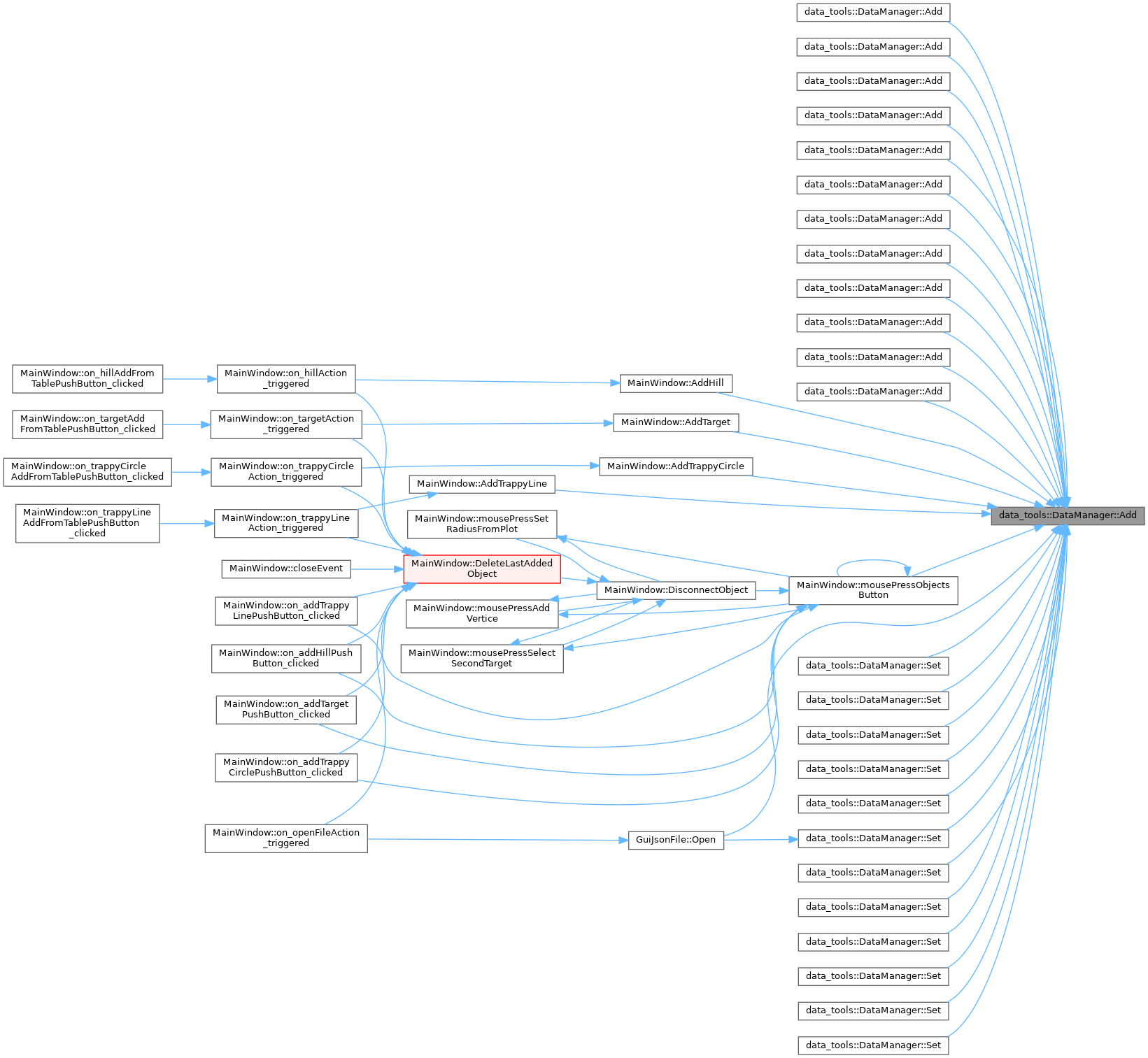
| void data_tools::DataManager::Add | ( | gui::TrappyCircle * | tr_c | ) |

| void data_tools::DataManager::Add | ( | gui::TrappyLine * | tr_l | ) |

| void data_tools::DataManager::Add | ( | lib::Hill & | data | ) |

| void data_tools::DataManager::Add | ( | lib::Target & | data | ) |

| void data_tools::DataManager::Add | ( | lib::TrappyCircle & | data | ) |

| void data_tools::DataManager::Add | ( | lib::TrappyLine & | data | ) |

| void data_tools::DataManager::Add | ( | std::vector< gui::Hill * > | new_hills | ) |

| void data_tools::DataManager::Add | ( | std::vector< gui::Target * > | new_targets | ) |

| void data_tools::DataManager::Add | ( | std::vector< gui::TrappyCircle * > | new_tr_circles | ) |

| void data_tools::DataManager::Add | ( | std::vector< gui::TrappyLine * > | new_tr_lines | ) |

| void data_tools::DataManager::Add | ( | std::vector< lib::Hill > & | new_hills | ) |

| void data_tools::DataManager::Add | ( | std::vector< lib::Target > & | new_targets | ) |

| void data_tools::DataManager::Add | ( | std::vector< lib::TrappyCircle > & | new_tr_circles | ) |

| void data_tools::DataManager::Add | ( | std::vector< lib::TrappyLine > & | new_tr_lines | ) |

|
private |
Проверяет данные в DataManager на валидность
| std::invalid_argument | если объектов какого-либо вектора > 10000 |
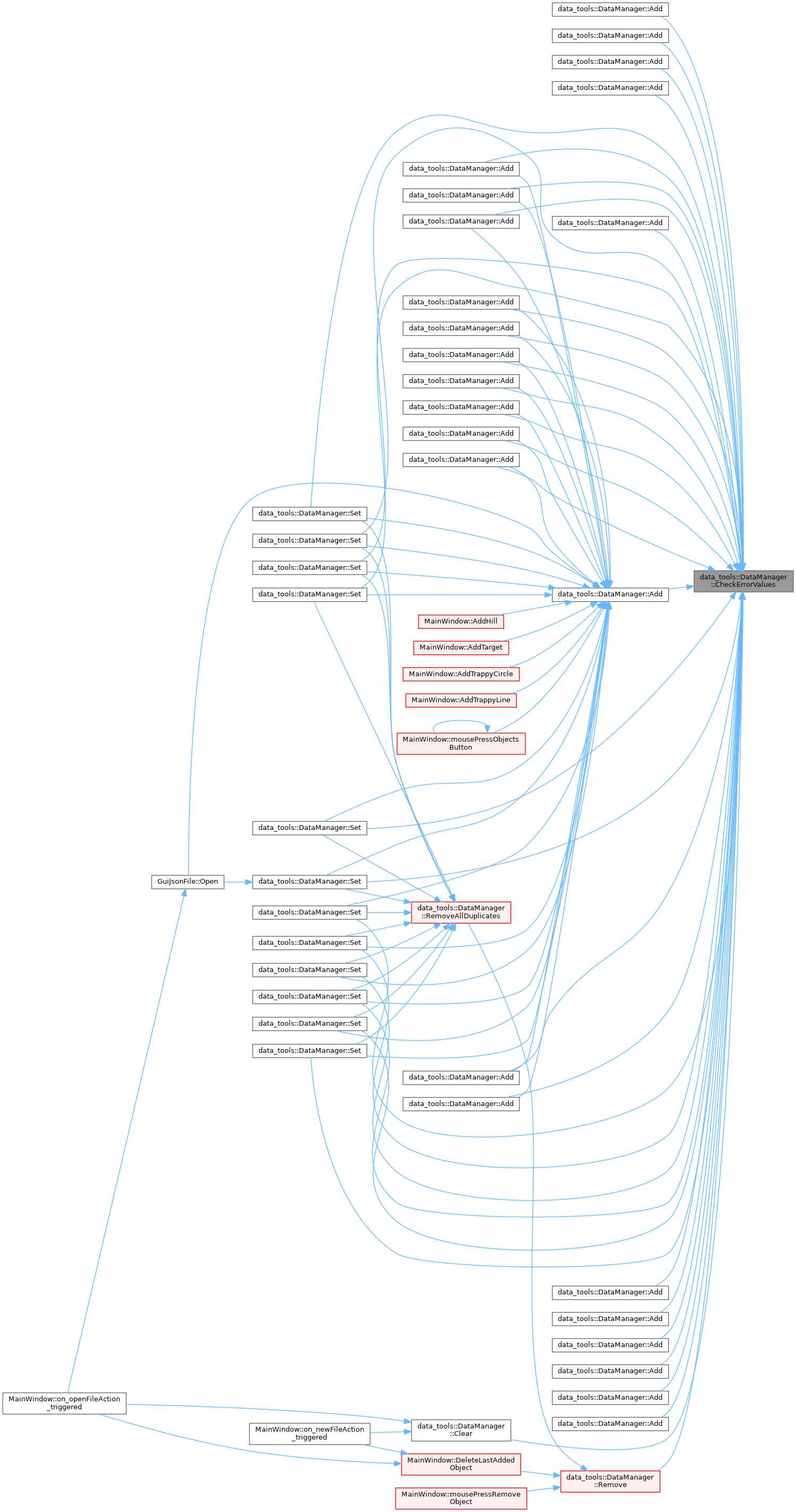
| void data_tools::DataManager::Clear | ( | ) |
Очищает все вектора объектов


| std::vector< gui::Hill > data_tools::DataManager::GetHills | ( | ) | const |
Возвращает значение Hills.
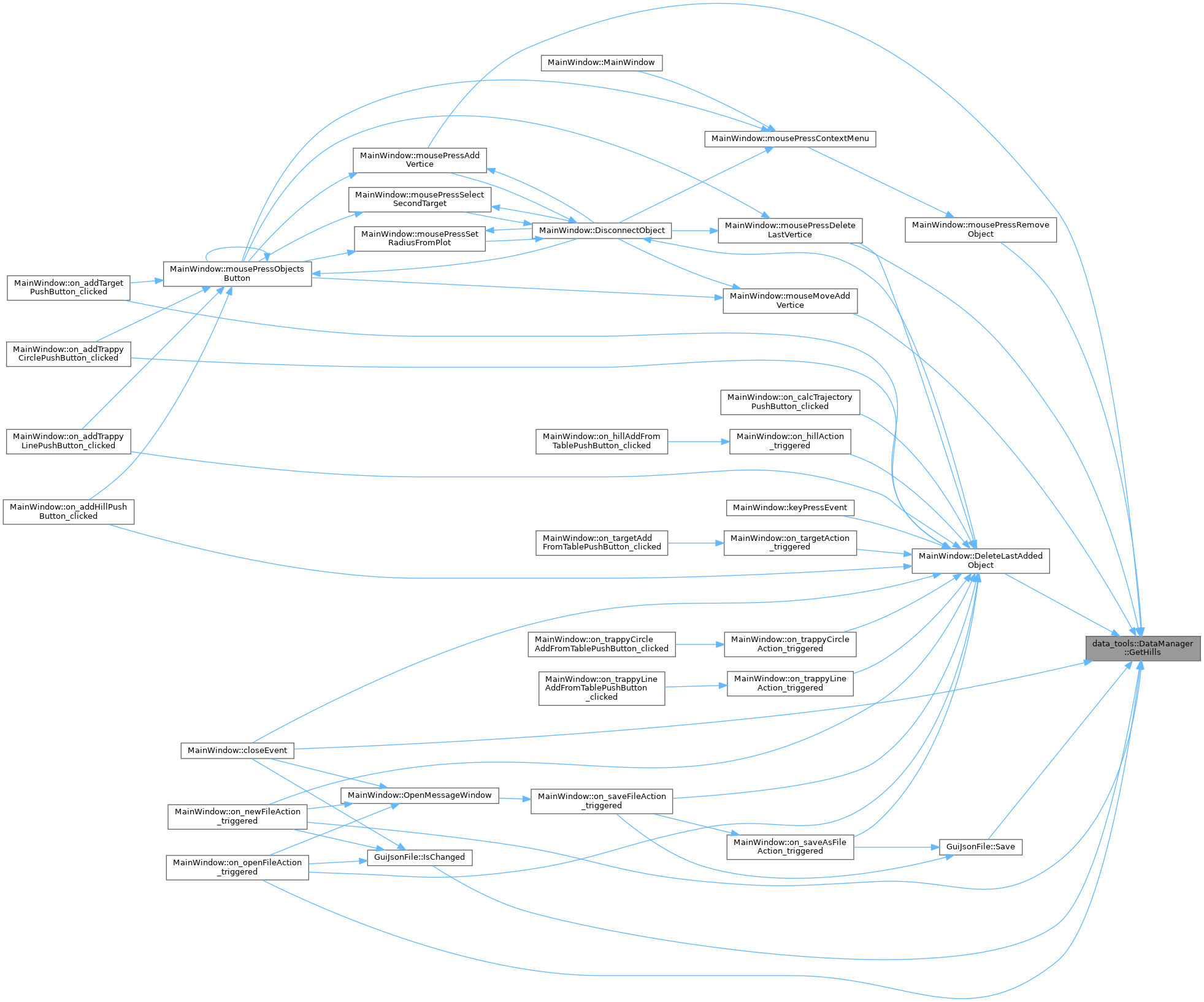
| std::vector< gui::Hill * > data_tools::DataManager::GetHillsPtrs | ( | ) |
Возвращает значение Hills.
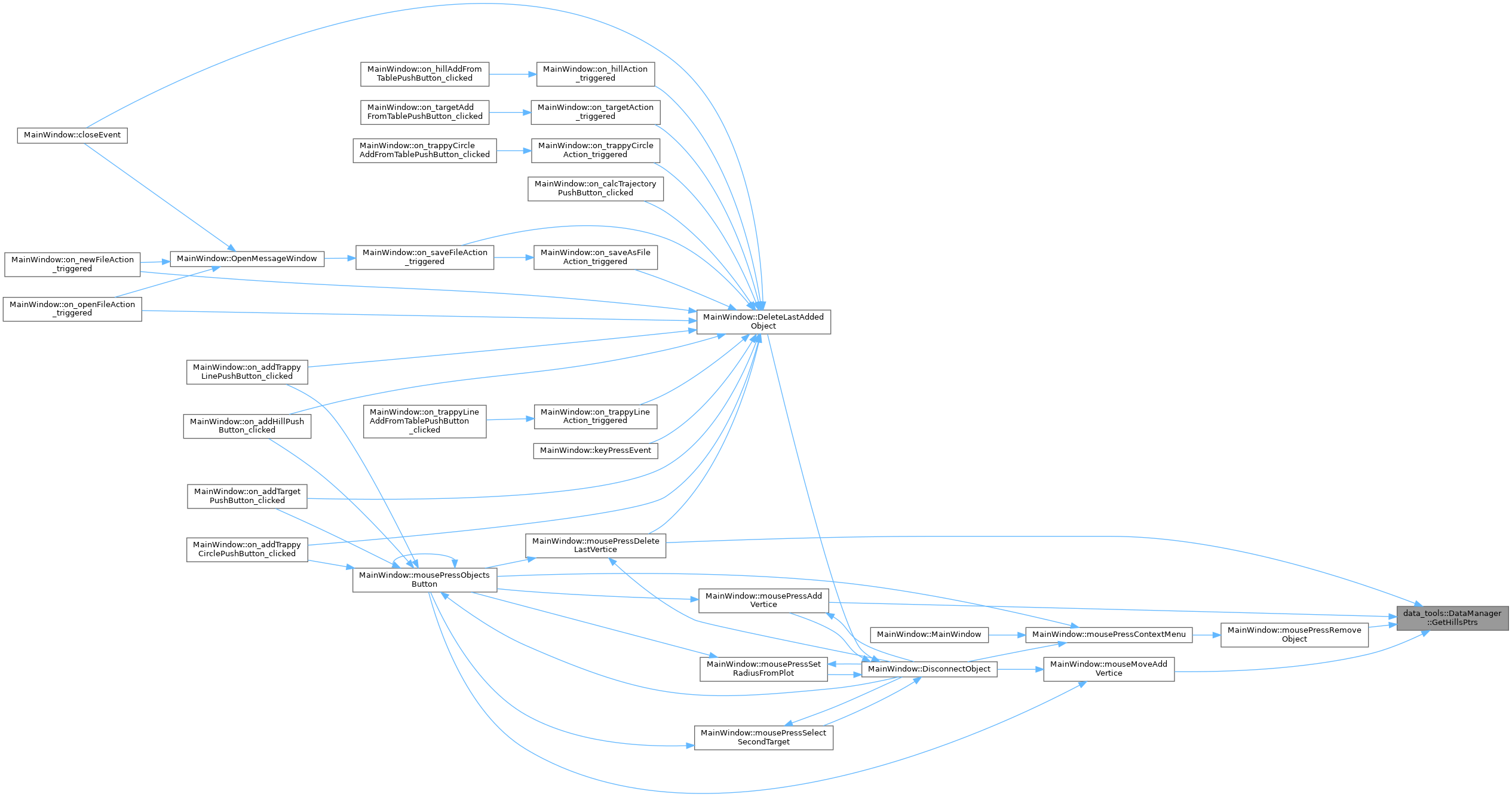
| unsigned short data_tools::DataManager::GetMinId | ( | gui::ObjectType | obj_type | ) |
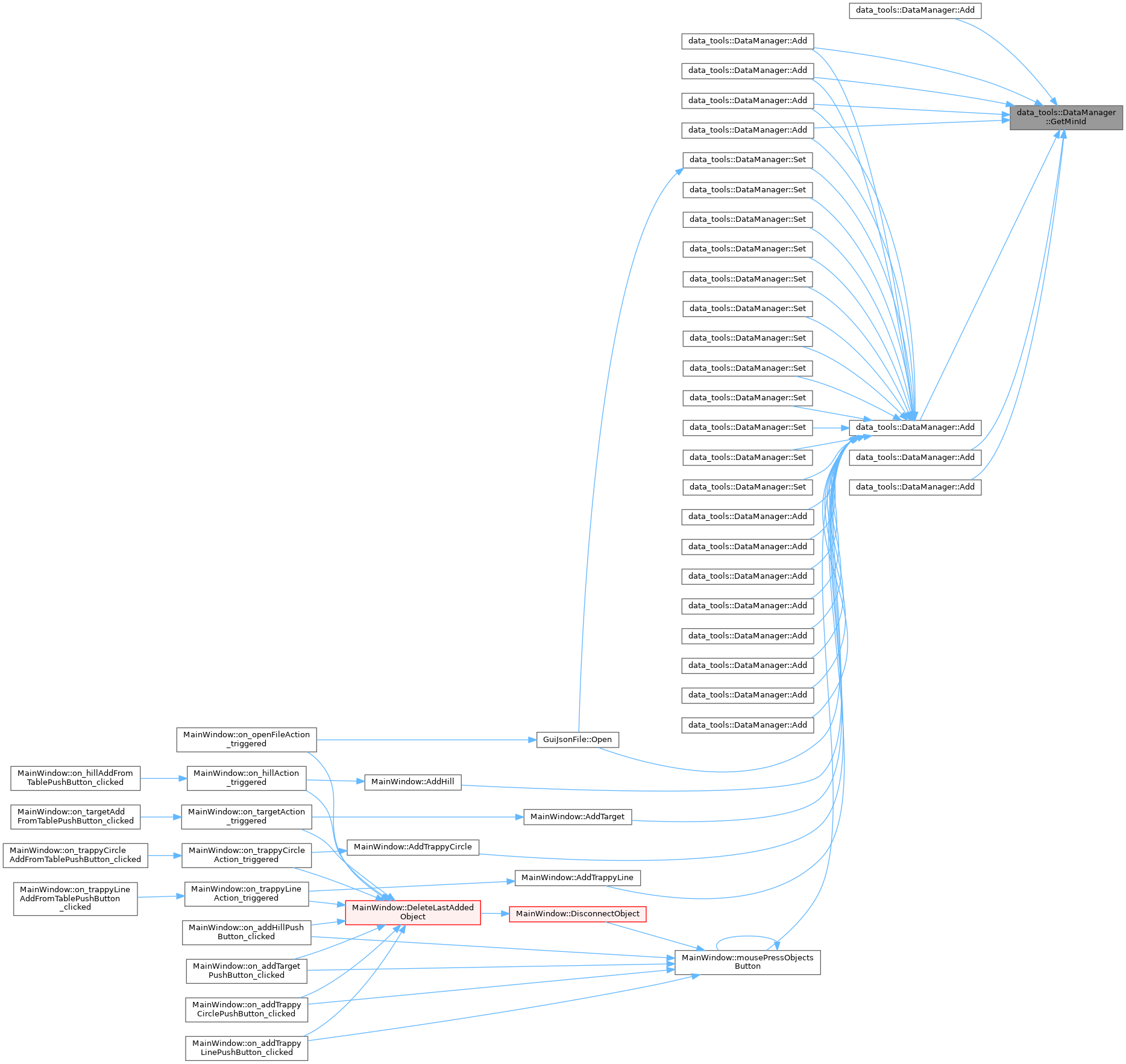
| std::vector< gui::Target > data_tools::DataManager::GetTargets | ( | ) | const |
Возвращает значение Targets.
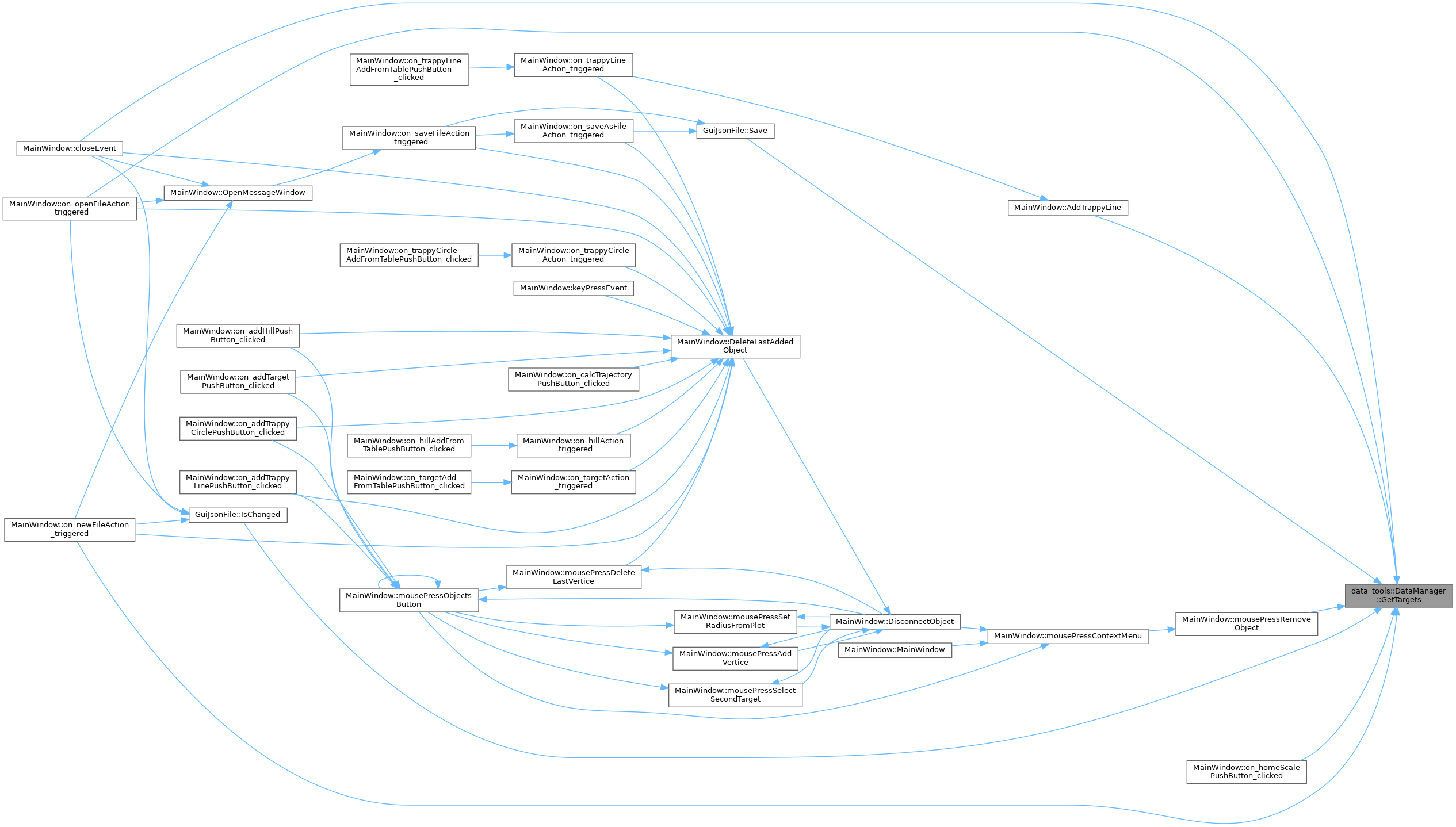
| std::vector< gui::Target * > data_tools::DataManager::GetTargetsPtrs | ( | ) |
Возвращает значение Targets.
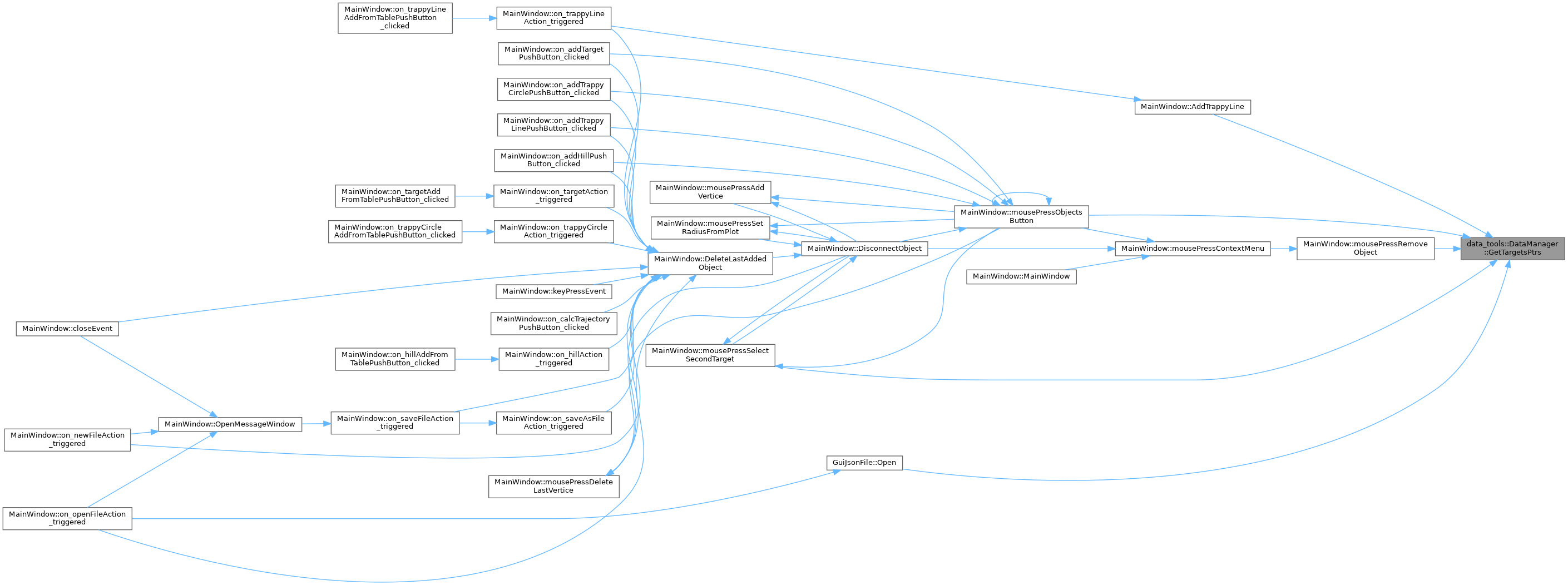
| std::vector< gui::TrappyCircle > data_tools::DataManager::GetTrappyCircles | ( | ) | const |
Возвращает значение TrappyCircles.

| std::vector< gui::TrappyCircle * > data_tools::DataManager::GetTrappyCirclesPtrs | ( | ) |
Возвращает значение TrappyCircles.
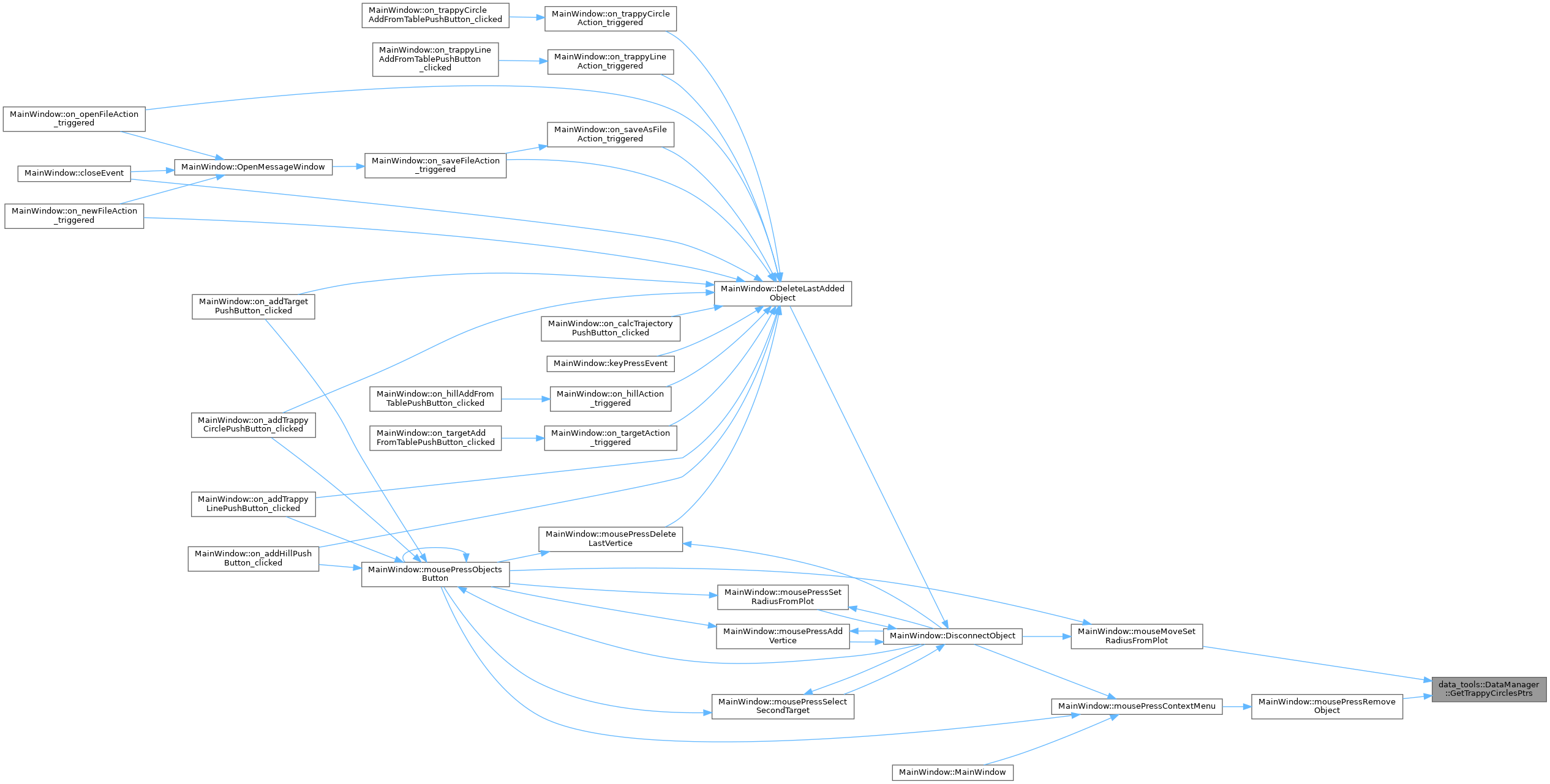
| std::vector< gui::TrappyLine > data_tools::DataManager::GetTrappyLines | ( | ) | const |
Возвращает значение TrappyLines.
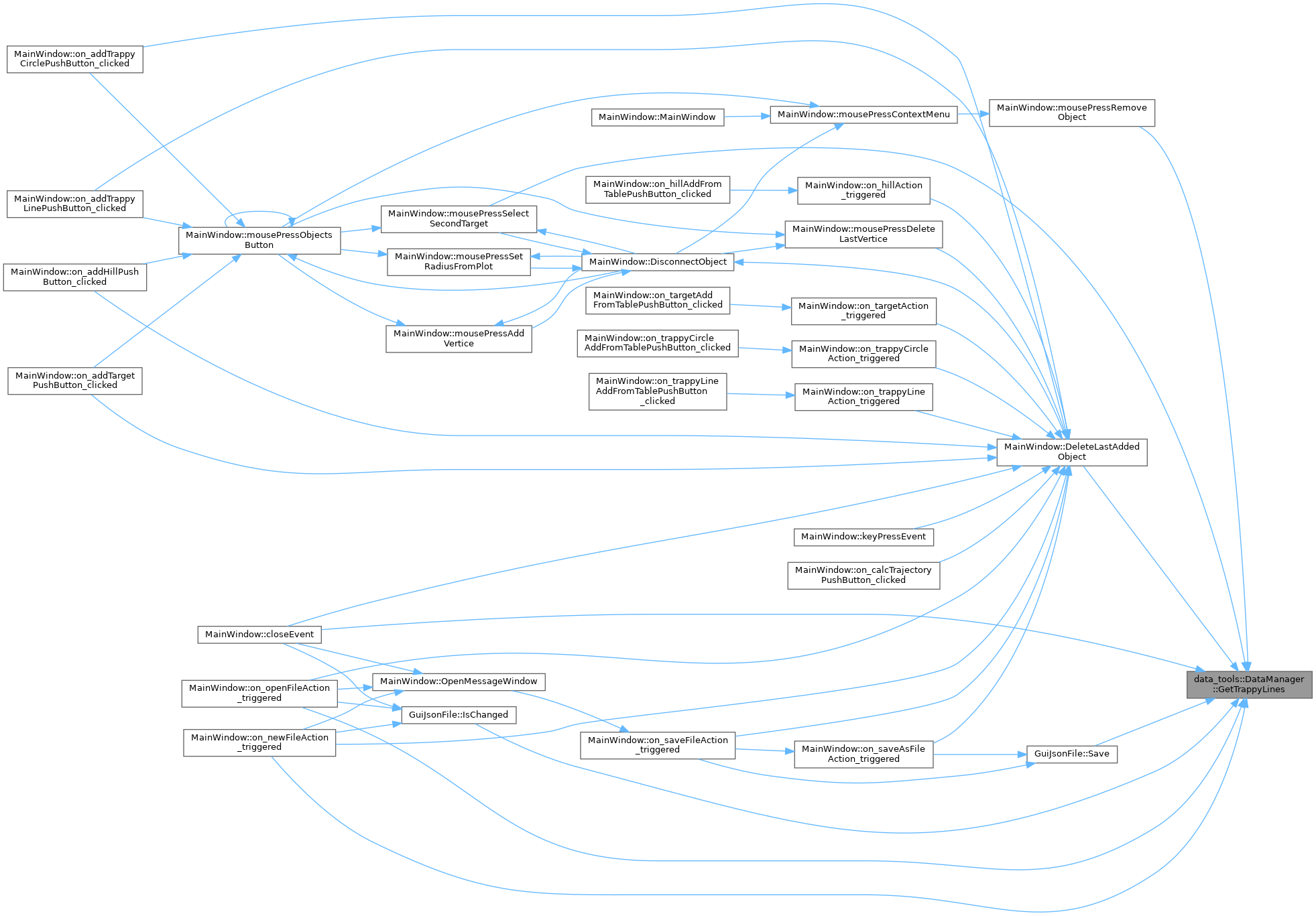
| std::vector< gui::TrappyLine * > data_tools::DataManager::GetTrappyLinesPtrs | ( | ) |
Возвращает значение TrappyLines.
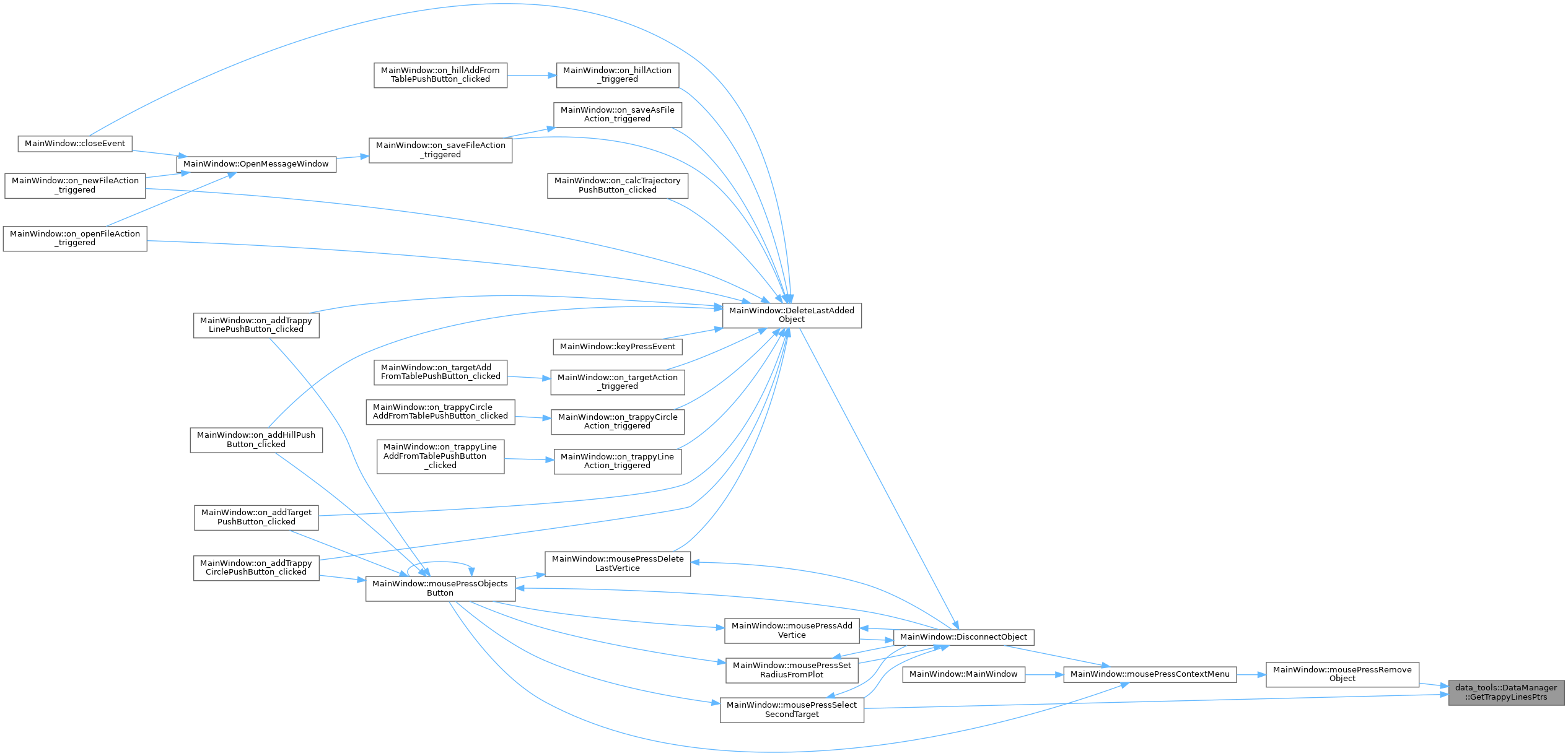
| void data_tools::DataManager::Remove | ( | gui::ObjectType | obj_type, |
| size_t | index ) |
Удаляет объект из менеджера по индексу
| obj_type | тип объекта |
| index | индекс объекта в его векторе |

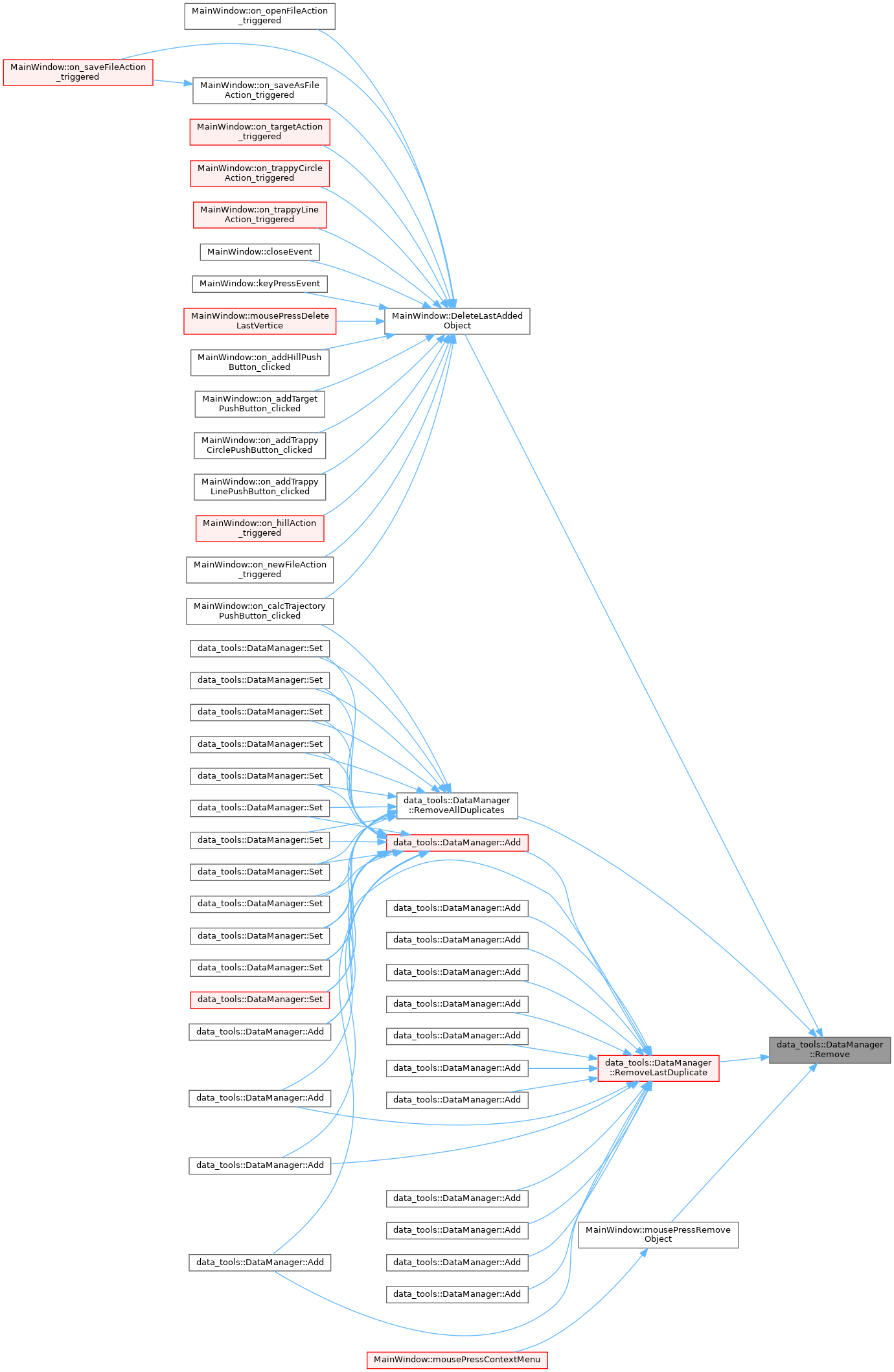
| bool data_tools::DataManager::RemoveAllDuplicates | ( | ) |
Удаляет все повторяющиеся объекты в векторах объектов

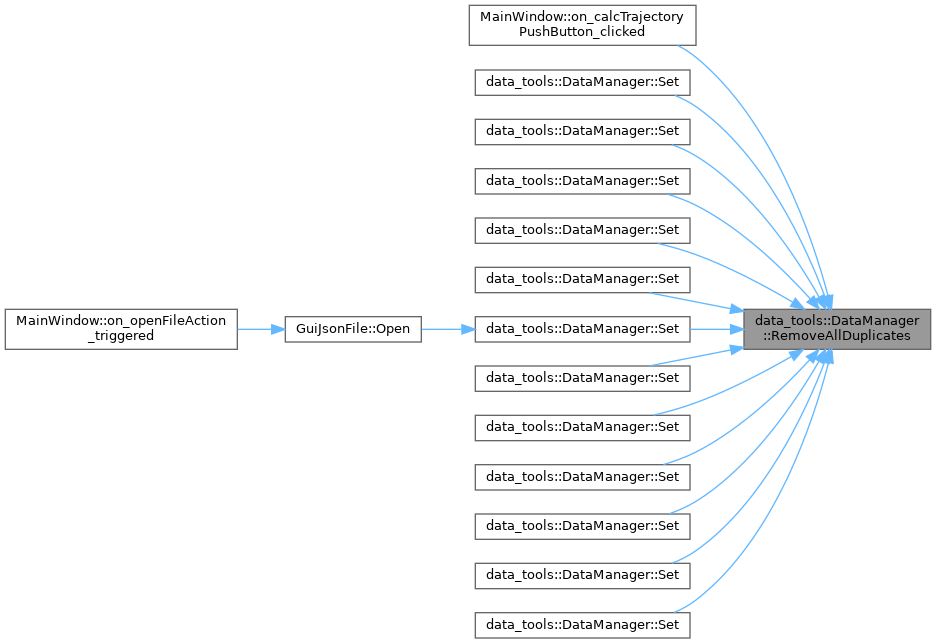
| bool data_tools::DataManager::RemoveLastDuplicate | ( | ) |
Удаляет последний объект в векторах, если он является дупликатом другого

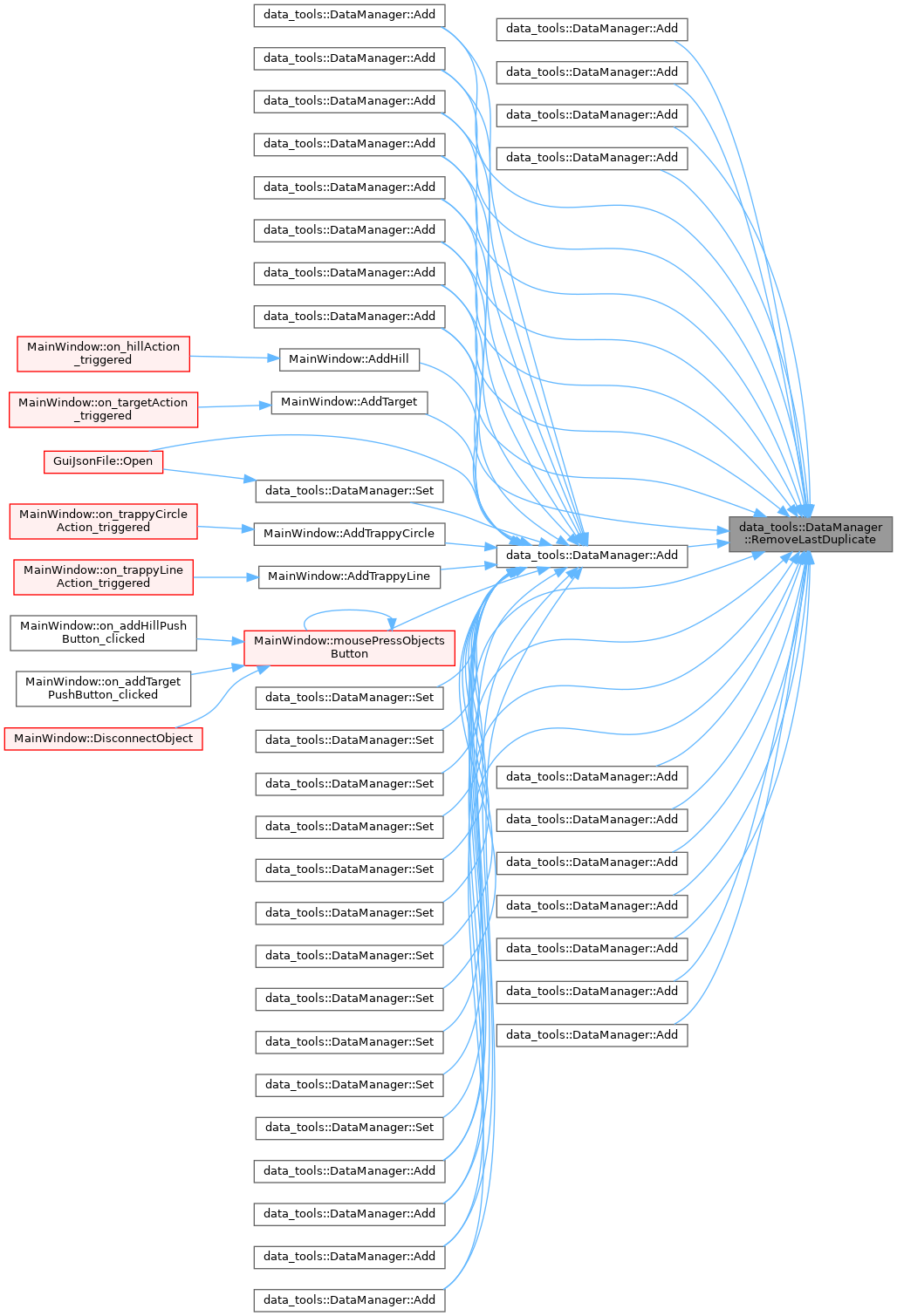
| void data_tools::DataManager::Set | ( | const std::vector< lib::Hill > & | hills | ) |

| void data_tools::DataManager::Set | ( | const std::vector< lib::Target > & | targets | ) |

| void data_tools::DataManager::Set | ( | const std::vector< lib::TrappyCircle > & | tr_circles | ) |

| void data_tools::DataManager::Set | ( | const std::vector< lib::TrappyLine > & | tr_lines | ) |

| void data_tools::DataManager::Set | ( | std::vector< gui::Hill * > | hills | ) |

| void data_tools::DataManager::Set | ( | std::vector< gui::Target * > | targets | ) |


| void data_tools::DataManager::Set | ( | std::vector< gui::TrappyCircle * > | tr_circles | ) |

| void data_tools::DataManager::Set | ( | std::vector< gui::TrappyLine * > | tr_lines | ) |

| void data_tools::DataManager::Set | ( | std::vector< lib::Hill > & | hills | ) |

| void data_tools::DataManager::Set | ( | std::vector< lib::Target > & | targets | ) |

| void data_tools::DataManager::Set | ( | std::vector< lib::TrappyCircle > & | tr_circles | ) |

| void data_tools::DataManager::Set | ( | std::vector< lib::TrappyLine > & | tr_lines | ) |

|
private |
|
private |
|
private |
|
private |